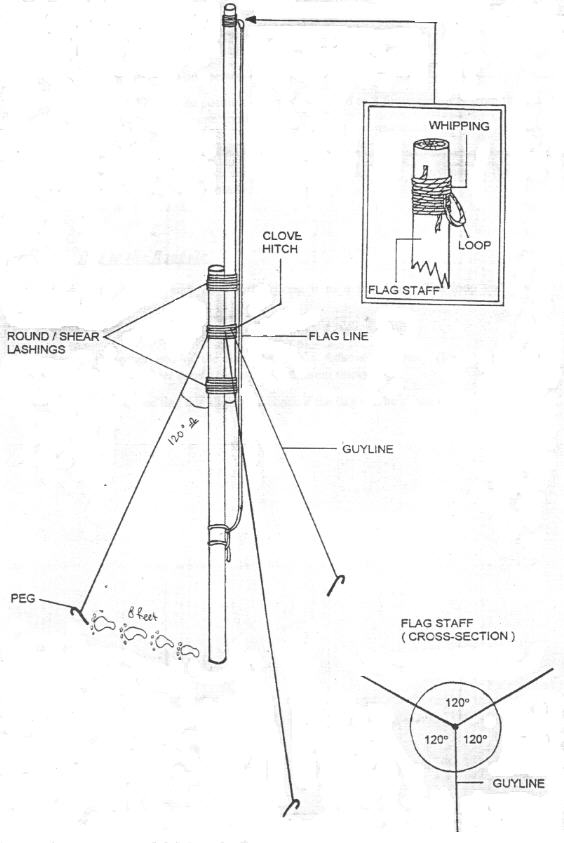Erection of Flagpole

Flagpoles are not
always available at campsites, so it is necessary for instructors
and cadets to improvise one from the available material at the
campsite if necessary. Besides, the flagpole is yet another item
in Campcraft Competitions that is held by the NPCC HQ once every
2 years.
Parts of a
flagpole / flag staff
- 2 x long poles
(with flaps at both ends and walls on both sides)
- 3 x pegs
- 3 x manila
hemp / nylon ropes (between 1/4 - 1/2 inch in diameter.
Equal length)
- Twine
- 1 x pulley
(optional)

Erection
Procedure

Use round lashings
to lash the 2 long poles together. The thicker pole will be the
bottom of the flag staff. The length of the overlapping portion
should be least 1/3 the length of the bottom pole.
- Use clove
hitches to secure the 3 manila hemp / nylon ropes to the
flag staff, between the 2 lashings. These will form the
guylines of the flagpole. The clove hitches should be
adjusted such that the working end is about 120 degrees
to one another, leaving no gaps between each hitch.
- If there is a
pulley, use the twine to whip it to the top of the flag
staff. If there is no pulley, a loop can be improvised
from the manharness knot. The free ends of the manharness
knot are then whipped tightly to the top of the flag
staff (refer to diagram).
- Use a long
piece of twine as a flag line, running it through the
pulley loop.
- Raise the flag
staff with one person anchoring the base.
- Hammer in the
3 pegs into position. They should be 6 to 8 footsteps
away from the base and at an angle of 120 degrees to one
another.
- Adjust the
flag staff until it is vertical then secure the 3
guylines to their pegs simultaneously using the guyline
hitches.

Securing a flag
to the flagpole
- A flag has 2
loose ends used for securing it to a flag line. The loop
end usually represents the top of the flag.
- Secure one end
of the flag line to the loop using a sheet bend.
- Secure the
other end of the flag line using a fisherman's knot (for
ropes of equal thickness) or a sheet bend (for ropes of
different thickness).
- Pull one end
of the flag line slightly to check if the flag will be
raised in the correct way.


BACK TO
HOMEPAGE
![]()
![]()

![]()
![]()